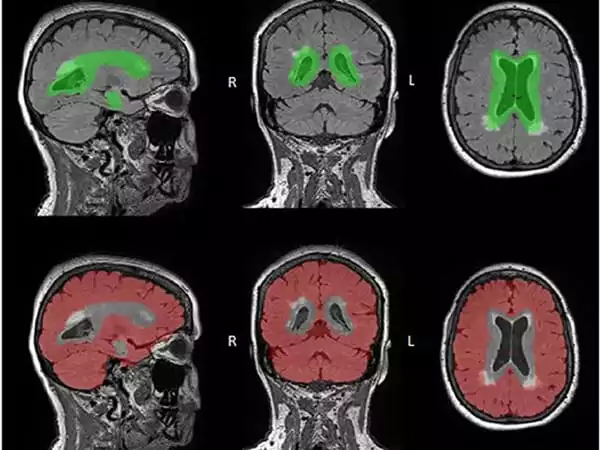Brain-computer interfaces (BCIs) collect and analyze brain signals before translating them into commands that are communicated to output devices that carry out desired tasks. Normal neuromuscular output channels are not used by BCIs. BCI’s primary goal is to replace or restore functional function to those who have been incapacitated by neuromuscular illnesses such as amyotrophic lateral sclerosis, cerebral palsy, stroke, or spinal cord injury. Scientists discovered that a particular fluid associated with immunity in the brain can reach the bone marrow of the skull via microscopic channels that aid in the detection and response to infection or damage.
Researchers who previously discovered channels in the skull revealed that cerebrospinal fluid can depart the brain through these channels and reach the bone marrow in the skull, which can detect and respond to infection or injury. Exploiting this process could help researchers understand and cure inflammation-related brain diseases.
Researchers led by a team at Massachusetts General Hospital (MGH) who previously discovered microscopic channels in the skull have revealed that cerebrospinal fluid (brain water) can depart the brain and enter the bone marrow of the skull through these channels. The discovery, which was published in Nature Neuroscience, is significant because immune cells produced in the spongy tissue of the skull’s bone marrow can scan cerebrospinal fluid for signs of infection and other risks to the brain.
Our findings may also be useful in researching cases where the immune response is damaging, for as when immune cells produced from skull bone marrow damage the brain and surrounding nerves. Understanding what causes neuro-inflammation is the first step toward properly controlling it.
Matthias Nahrendorf
In 2018, a team led by Matthias Nahrendorf, MD, PhD, an investigator in MGH’s Center for Systems Biology and a professor of radiology at Harvard Medical School, discovered that immune cells responding to brain infection and injury originate in the skull’s bone marrow and travel through hundreds of tiny, previously unknown channels connecting the skull’s bone marrow to the outer layers of membranes that cover the brain (called meninges). Previously, it was assumed that bone marrow throughout the body reacts to an injury or infection at any site, but the research revealed that skull bone marrow plays a unique role due to its proximity to the brain and its link to the meninges via channels.
In this latest work, the team — which was headed by Nahrendorf, Charles P. Lin, PhD, leader of the Advanced Microscopy Group at the Center for Systems Biology at MGH, and Michael A. Moskowitz, MD, a physician investigator at MGH who was awarded the 2021 Lundbeck Brain Prize — demonstrated that in addition to allowing immune cells to flow from the skull’s bone marrow to the meninges, the skull channels also allow the cerebrospinal fluid to flow in the opposite direction, out of the brain and into the skull’s bone marrow.

“We now know that the brain can signal to this immune center, or call out for aid, when things go awry, as they do during infection and inflammation. Cells in the bone marrow of the skull monitor the cerebrospinal fluid that exits the brain via the previously found skull channels “explains Nahrendorf “Because these diseases have an inflammatory component, this has potentially tremendous consequences for ailments like dementia and Alzheimer’s disease.”
Nahrendorf and his colleagues, including lead author and MGH research fellow Fadi E. Pulous, PhD, discovered that bacteria that cause meningitis (meningeal inflammation) move through the channels and enter the bone marrow of the skull. This leads bone marrow cells to produce additional immune cells in order to battle the invasion. A better understanding of these processes may lead to new strategies to treat meningitis.
“Our findings may also be useful in researching cases where the immune response is damaging, for as when immune cells produced from skull bone marrow damage the brain and surrounding nerves. Understanding what causes neuro-inflammation is the first step toward properly controlling it” explains Nahrendorf
A BCI is a computer-based system that collects and analyzes brain signals before translating them into commands that are communicated to an output device to perform a desired activity. As a result, BCIs bypass the brain’s typical output channels of peripheral nerves and muscles. This definition tightly confines the term BCI to systems that measure and use central nervous system signals (CNS). A voice-activated or muscle-activated communication system, for example, is not a BCI. This work was funded in part by US federal funds from the National Institutes of Health.





